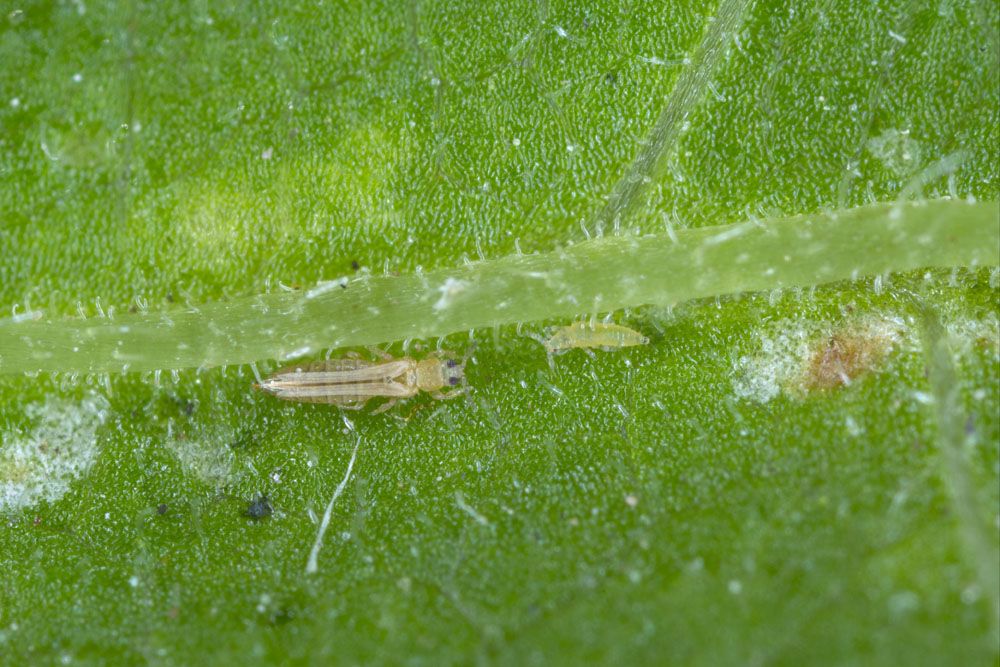
Western Flower Thrips – Frankliniella occidentalis
Western Flower Thrips: Appearance, Territory, Damage and Life Cycle
Latin Name: Frankliniella Occidentalis
Appearance: Larvae are almost translucent white to yellowish to orange-yellow in color, with a big head and vivid red eyes. The color of adult females varies greatly. They range in color from practically white to golden orange to nearly black.
Hosts Plants: This thrips feeds on practically any blooming plant. Carnations, chrysanthemums, gerberas, geraniums, marigolds, pansies, and roses are the most common host plants.
Territory: This thrips species is local to the Southwest United States, but it has spread to other regions such as Europe, Australia, and South America through the export of infected plant material.
Damage Insect Cause: Thrips harm plants by piercing surface tissue cells and sucking out their contents, causing the surrounding tissue to perish. Their presence in the crop is indicated by the silver-grey spots on the leaves and the black specks of their excreta. The loss of chlorophyll reduces the plant’s vitality. When infestations get severe, the leaves might shrivel.
Western flower thrips (Frankliniella occidentalis) favor developing plant tissues such as growth tips and flower buds to feed on. When these tissues continue to grow, the leaves and flowers might become severely distorted. Flower buds that have been severely contaminated may not open at all. Fruits can also be damaged, even at low densities, resulting in malformations like the “pig-tail” fruit common in cucumber fields. Even extremely small populations of thrips can cause damage in many attractive crops by transferring viruses or diminishing aesthetic value by destroying blooms. The western flower thrips is the primary vector of both tomatoes spotted wilt virus (TSWV) and impatiens necrotic spot virus. Both viruses infect a broad variety of plants, and it is common for a single host plant to be infected by both viruses.
Life History and Habits: The western flower thrips has six stages of development: egg, two larval instars, prepupa, pupa, and adult insect. Western flower thrips eggs are placed in leaves, flower petals, and delicate sections of stems. They use a saw-like ovipositor to inject themselves into plant tissue. Western flower thrips pupate on the ground most of the time, however pupae can also be found on leaves, in flowers, or in other protected areas. The growing wing buds distinguish the prepupal and pupal instars. The pupa has longer, more developed wing buds and longer, curled back over the head antennae than the prepupa. Prepupal and pupal instars do not eat and move only when disturbed. Both sets of wings are completely grown in adults.
